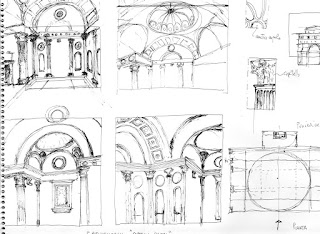METROPOLITAN DRIFTS. walkers, slow tourists, psychogeographers.
A "Walking through Apulia" article on Cameracronica Magazine is dedicated to Gianpio De Meo, who died prematurely.
When it comes to
Land Art, the names of important figures like Richard Long, Robert Smitshon,
Tony Smith, Carl Andre and Hamish Fulton are approached. Among the practices
that I find most interesting are those of Fulton, when he states that "My
art form is the journey made on foot in the landscape ... the only thing we
have to take of a landscape are photographs. that we must leave behind are traces
of steps ". By investigating the work of the artist better I have found in
him the practices of the meditative walk practiced for centuries in kin-hin
which is a practice of Zen. Fulton waives to produce
"transformations" of the landscape, as other artists do with more or
less eco-sustainable works.But what do the figures
of the walker, the slow tourist and the psychogeographer all have in common? We
have not yet told who he is. Since the dawn of time man has been a nomad, Bruce
Chatwin says "Nomos means in Greek pasture and nomad, is a leader who
presides over the distribution of pastures" What is clear is that walking
on foot or at the limit with slow vehicles (bikes) share the three figures. The
three figures, which move in time and space with distinct aims, are united by
the "movement". Among the fundamental differences inherent in the
"movement", there is that of how it is practiced.
The TRAVELER can move in the "space" with every type of public and / or private vehicle: ship, train, plane, bus, car, motorcycle, bicycle, on foot. It mixes the means of locomotion among them or adopts one as a priority. It is evident that the traveler who moves in time and space in every direction and by any means is a "broad category". You travel on the surface of the sea, under the sea, in the sky, in space and on the land surface. Many travel even with the mind "from the comfort of home" through the reading of stories, novels and a thousand adventures.
THE SLOW TOURIST.
These, unlike the first, fundamentally opt for conscious and responsible choices. It makes environmental assumptions and soft mobility its own assumptions. So the polluting means of transport are set aside: airplanes, ships, but also car trains etc. It prefers the bicycle to the most or relies on its body as a means of locomotion.
THE PILGRIM
can use public or private transport, or he also makes a responsible and conscious choice and simply walks on foot. Naturally the pilgrim's walk is fundamentally an "act of faith", one reaches sacred places, beating paths traveled by faithful for centuries.
can use public or private transport, or he also makes a responsible and conscious choice and simply walks on foot. Naturally the pilgrim's walk is fundamentally an "act of faith", one reaches sacred places, beating paths traveled by faithful for centuries.
THE PSYCHOGEOGRAPH
uses techniques born with artistic avant-gardes to investigate spaces. As early as 1921, the Dadaists organized a series of visits to the banal places of the city of Paris, performing "walking" a kind of automatic writing in real space. The psychogeographer makes use of various fields of knowledge: geography, anthropology, urban planning, sociology, economics, literature, art, cinema and philosophy. The survey scale is landscape and uses the "transurbanza". The "drifts" made by the "literary" were actions that left no traces, in fact they were built modes of action and situations whose consumption left no signs. It was an aesthetic activity that was part of the Dadaist logic of anti-art. De Board, Ivain, Wolman and other Situationists moved on foot or by public transport in the Paris of the 50s and 60s to shape those traces of experience through metagrafies.
CONCLUSION
As we see, there are profound differences between the figures investigated, but there are also elements that unite the same three figures. The modalities that today are adopted in going to the discovery of the places have been transformed. The innumerable information determines the lack of the element of surprise. Everything is already predictable, pliable, visible in advance, lacking the emotion, the authentic feeling of "navigating at sight" and without a compass. It is necessary to go to the places object of planning and transformation, to investigate the sites concretely, to talk to the people who live in those places, to use also the modalities of the psychogeographic drift to know landscapes and territories as an alternative tool.
In 2009 I wrote a Zen maxim: "it starts from the end and the end never begins".
arch. Bernardo BRUNO
www.derivemetropolitane.it

Commenti